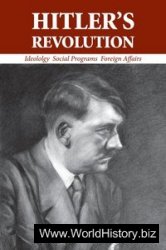Because the main audience for this book are anglophone students, many names have been given in their anglicized form, and spelling and accents have been modernized. For the same reason, all entries in the bibliography are works in English, including translations of several originally published in other languages. Within this limitation, many of the most recent useful books have been included. Concerning proper names, surnames are used in the text except in a few instances of rather famous individuals, such as Leonardo da Vinci, who are universally known by their first name.
Introduction

HISTORY, GOVERNMENT, AND SOCIETY
European government and society changed more during the two centuries of the Renaissance than in the previous 500 years. The feudal society of the Middle Ages chiefly consisted of the nobility and peasants living on large estates and monks residing in monasteries. The majority of medieval cities had a relatively small population, consisting of nobility, clergy, and townspeople, from merchants to poor laborers. From the Middle Ages through the Renaissance, there was little possibility of changing one’s position in society. Even during the Renaissance, members of the clergy were locked into different social classes, ranging from wealthy landholding bishops to priests with poor rural parishes.
By the late 14th century the Italian city-states had begun to prosper from an increased level of trade with the East; that prosperity led to the development of banks and monetary commerce. Although isolated parts of Italy, especially in the south and far north, had a feudal society during much of the Renaissance, guilds and merchants influenced the course of political events in the city-states and republics. Wealth began to concentrate in the cities dominating their respective regions, and a new social class of bankers and wealthy merchants arose. The great banking families opened branches in other countries, notably in cities such as Brussels and Seville at the nexus of trading routes. Consequently, cities with rapidly expanding commercial opportunities attracted residents.
While the vast majority of people continued to live in rural areas, as they had for centuries, free peasants who relocated to cities during the 15th century provided labor for construction, factories, transportation, and other areas important for urban development. On the one hand, urban society was becoming more complex, with more causes for social unrest. On the other hand, individuals in cities had the potential for advancement through business, education, or religious training. The present book focuses predominantly on life in cities because most of the movements and events that we identify as the European Renaissance, especially in literature, music, and art, occurred in urban contexts. The rulers of nation-states gathered together members of their court in and near the great cities of Europe, and the important political leaders resided in urban locations. Cities had become major centers of political and economic power by the 16th century. During the Italian Wars of the late 15th and 16th centuries, forces from northern Europe invaded Naples, Rome, and the northern Italian city-states. Consequently cities in northern Europe also became centers of Renaissance culture as Italian artists, engineers, humanists, scientists, musicians, and others fled the economic destruction of their homeland and made their way north. Society in general became more refined, with Italianate tastes dominating fashion, cuisine, and other aspects of daily life.
The political structure of Renaissance Europe consisted of city-states in the Italian Peninsula, principalities in Germanic areas, and nation-states in most other parts of the continent. Several countries, especially Spain, France, and England, developed into unified national states with organized governmental systems between 1400 and 1600. This unification enabled the rulers of such states to gain prestige and power far exceeding those of the dukedoms and regional kingdoms of the late Middle Ages. The role of the monarch was changing, and this development would lead to the rise of absolutism in the 17 th century. Many of the noble families, such as those in France, appeared to support the monarch while maintaining foreign allies with the hope of seizing the throne by force or by marriage. Monarchs began to gain a wider base of political support by forging new alliances with members of the middle class. In addition, the Great Schism and later the Protestant Reformation reduced the influence of the pope, while the fragmentation of the empire weakened that of the Holy Roman Emperor. Thus the political framework of modern Europe slowly took shape, with the bureaucracy of national and regional administrative offices giving rise to a new professional class, the civil servant. The governments of Portugal, England, Spain, France, and the Netherlands had important colonies beyond the borders of Europe. A complicated network of administrative offices was required to keep track of settlers, land grants, mercantile affairs, shipping, lawsuits, and jurisdictional disputes with the Catholic Church. These colonies also provided new opportunities for young men in all levels of society. Many of the Spanish conquistadores, for example, were farmers’ sons from the far western part of Spain.
Handbook to Life in Renaissance Europe

As governments became more complex, they required administrators, secretaries, and notaries to manage the financial, legislative, and judicial aspects of running the country. Many governments in Renaissance Europe had some type of representative body, each functioning in different ways from the others. Whereas some actually had the power to enact laws, others only advised the secular ruler. England had Parliament to approve laws, whereas the Estates General of France functioned as a judicial body. The Cortes in Aragon and Castile were the representative bodies of Spain, and diets served various regions in Germany. Although these bodies had existed in some form before the 15th century, their political philosophy was affected to some
Degree during the Renaissance by new humanistic ideals of representative government. These ideals originated in Italy, where the history of the Renaissance begins.




 World History
World History









